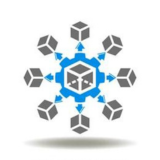Serverless Computing
INTRODUTION
Serverless computing, also known as Function as a Service (FaaS), is a cloud computing model where cloud providers manage the underlying infrastructure and automatically allocate resources for executing code in response to events.
Key Concepts
Event-Driven Architecture
Serverless computing operates on an event-driven model, where functions are triggered by specific events such as HTTP requests, database changes, file uploads, or scheduled tasks.
Stateless Functions
Serverless functions are stateless, meaning they do not maintain any persistent state between invocations. They are designed to execute short-lived tasks in response to events and scale automatically based on demand.
Pay-Per-Use Pricing
With serverless computing, you only pay for the compute resources consumed during function execution, measured in milliseconds of execution time and memory usage. This pay-per-use pricing model offers cost efficiency and scalability.
Components of Serverless Computing
Use Cases
Web Applications
Serverless architectures are well-suited for building web applications, APIs, and microservices that require auto-scaling and event-driven processing.
Data Processing
Serverless functions can be used for processing data streams, performing ETL (Extract, Transform, Load) tasks, and running batch jobs on large datasets.
IoT Applications
Serverless computing is ideal for processing real-time data streams from IoT devices, performing analytics, and triggering automated responses based on sensor data.
Backend Services
Serverless functions can serve as backend services for mobile applications, handling authentication, data storage, and business logic without the need for maintaining a dedicated server infrastructure.







